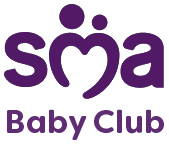At a glance
Cows’ milk allergy (CMA), also known as cows’ milk protein allergy (CMPA) is one of the most common baby allergies
A milk allergy is an immune response, whereas lactose intolerance is a digestive issue
Breastfeeding is the best way to reduce your baby's risk of developing allergies
Most children grow out of cows’ milk protein allergy by the time they reach school age
Signs and symptoms of a cows’ milk allergy
Allergies in babies are fairly common. Cows’ milk allergies, specifically, are diagnosed in less than 2% of babies in the UK, so it’s important to make sure you seek advice and receive a diagnosis for your baby before you adjust their diet. With a cows’ milk allergy the immune system mistakenly identifies the normally harmless milk protein as a threat and fights it in the form of an allergic reaction. Cows’ milk allergy may be immediate or delayed, with symptoms appearing anywhere between a few minutes or 72 hours after ingestion.
If you‘re worried your baby has a cows’ milk allergy, you should seek medical advice as soon as possible to avoid making unnecessary dietary adjustments.
The symptoms of a cows' milk protein allergy can include:
- Skin rashes
- Eczema
- Diarrhoea
- Vomiting
- Stomach cramps
More severe allergies could result in difficulty breathing and more rarely, anaphylaxis. Both of these require immediate medical attention.
Babies with a family history of allergy are more at risk of developing allergies themselves, even if they are exclusively breastfed. The good news is that most children will grow out of a cows’ milk allergy by the age of three, as their immune system develops further.
If you think your baby may be allergic to either cows' milk or other food ingredients, speak with your GP, health visitor, or public health nurse. In the meantime, have a look at this symptom checker.
Signs and symptoms of lactose intolerance
Lactose is a natural sugar found in cows’ milk. If your baby has a lactose intolerance it simply means they are unable to digest this sugar.
Symptoms of lactose intolerance include:
- diarrhoea
- vomiting
- stomach rumbling and pains
- wind
It is not an allergy, as lactose intolerance doesn’t involve the immune system. In the UK, lactose intolerance is more common in people of Asian or African-Caribbean heritage.
Lactose intolerance can also be a temporary result of an illness, coming on for a few days or weeks after a tummy bug or prolonged use of antibiotics. This is known as secondary lactose intolerance and is the most common cause of lactose intolerance in the UK, particularly in babies and young children.
Treatment would usually be a case of avoiding lactose in food and drinks. If you think your baby may have lactose intolerance, speak to your GP or health visitor.
Breastfeeding: the first and best defence against allergies
In those first few months of life, breast milk is tailor-made for your baby, and designed to build and support your baby’s immune system so they’re less likely to develop allergies in the future.
Having said that, exclusive breastfeeding isn’t always possible for many mums. But there’s no need to worry as there are formulas designed to help reduce the risk of your baby developing an allergy – though they do need to be used from the first formula feed.
The best thing to do if you have any concerns about allergies is to speak to your GP or health visitor who’ll be able to discuss the best options and choices available to you and your baby.
NEXT STEPS
If your baby is diagnosed with a cow’s milk allergy you’ll be given appropriate advice and should be referred to a dietitian.
If your baby is breastfed, mum will be asked to avoid eating dairy products and will be advised on appropriate calcium and vitamin D supplements. For formula-fed babies your GP or paediatrician may suggest an alternative type of formula. It’s important you speak to a healthcare practitioner before you make any changes to their milk.
IMPORTANT NOTICE:
We believe that breastfeeding is the ideal nutritional start for babies and we fully support the World Health Organization’s recommendation of exclusive breastfeeding for the first six months of life followed by the introduction of adequate nutritious complementary foods along with continued breastfeeding up to two years of age. We also recognise that breastfeeding is not always an option for parents. We recommend that you speak to your healthcare professional about how to feed your baby and seek advice on when to introduce complementary feeding. If you choose not to breastfeed, please remember that such a decision can be difficult to reverse and has social and financial implications. Introducing partial bottle-feeding will reduce the supply of breast milk. Infant formula should always be prepared, used and stored as instructed on the label in order to avoid risks to a baby’s health.
Feeding issues symptom checker
Experiencing feeding issues with your newborn?
Get help narrowing down the cause with our symptom checker.








